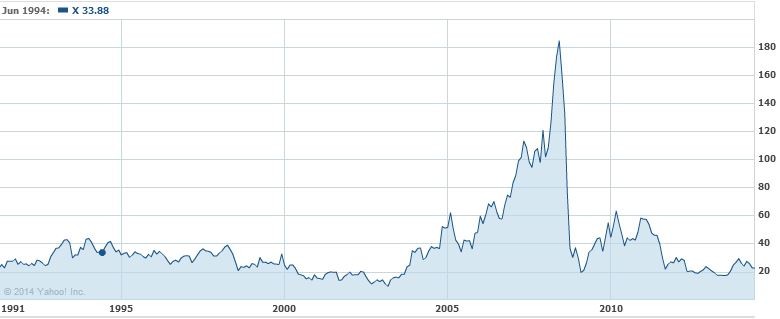Oddball Stocks A few thoughts on ROIC
Post on: 13 Май, 2015 No Comment

A few thoughts on ROIC
the cash return on cash spent for capital. - Ken Hackel
It never fails, if I include my return on invested capital calculation in a post I will invariably get a few comments or emails questioning it or asking for clarification. This last post was no exception.
The ROIC calculation I use is a bit unique, but I can’t take credit for it. I use a calculation that Ken Hackel presents in his book Security Valuation and Risk Analysis: Assessing Value in Investment Decision-Making . The book focuses on evaluating companies on a cash flow basis. This means looking at free cash flow, cash return on invested cash, and sources and uses of cash.
Cash and cash flow are the focus of the book because cash flow based numbers show a true flow of what’s moving in and out of a business not an accounting version. Often the accounting picture can be gamed by adjusting estimates. Some accounting metrics are just outlandish, my favorite is Adjusted-EBITDA. It seems every company now has an Adjusted-EBITDA number that only includes good things and excludes any potentially bad items. I’ve also noticed that executive bonuses are usually based on these fiction numbers as well. Quite a nice gig if you can get it!
Ken Hackel gives this reason to use a cash flow based ROIC formula verses a more standard EBITDA/EBIT version:
In essence, entities having a low ROIC or dependent on large capital expenditures resulting in small amounts of distributable cash flows deserve low valuation metrics despite their higher rates of growth in GAAP-related yardsticks. This is why many investors are fooled, having invested in low-P/E companies. (Hackel, p252)
Hackel mentions that he searched EDGAR to find the most common ROIC formula that companies use to measure themselves, this was the result:
EBITDA + interest income * (1-tax rate) + goodwill amortization
total assets — (current liabilities + short term debt + accumulated depreciation)
A more accurate cash based version presented in the book is as follows:
free cash flow — net interest income
invested capital(equity + total interest bearing debt + present value of leases — cash marketable securities)
Hackel provides some reasons why specific values are included in the calculation. Instead of trying to summarize his points I’m just going to quote him, he says it much better than I would.
1. Intangible assets because those funds were used to aquire cash producing assets.
2. All interest-bearing debt because this too was sold to purchase productive assets.
3. Present value of operating leases because this represents contractual debt in exchange for required assets needed to produce revenue, hence cash flows. To exclude operating leases would be to unfairly boost the ROIC and to distort the comparison between companies that buy assets or enter into capital leases and those which enter into operating leases.
4. Since free cash flow is uses, it includes the payment of cash taxes and the elimination of other accruals. (Hackel, p252)
Of course no formula is perfect and there are a few downsides to this formula. Activities that go straight to the equity statement such as foreign currency translation adjustments, actuarial gains/losses, changes in fair value of available-for-sale assets/cash flow hedges, and revaluations of property, plant and equipment end up affecting the formula. These changes would need to be backed out to get an accurate picture of the company’s cash return on capital acquired for cash.
When I read this formula in the book it really resonated with me and I’ve been using it as I analyze companies. Some investors might consider it a bit too stringent, but I don’t mind that. The formula has come in handy finding companies that end up directing most of their cash to working capital or capex. I don’t want to invest in companies that have great net income numbers but don’t have the cash flow to back it up.
Disclosure: If you purchase the book through Amazon I will receive a small commission. There is no difference in book price entering Amazon through my link, or on your own. I received this book as a gift from a family member, the author or publisher has never contacted me.














